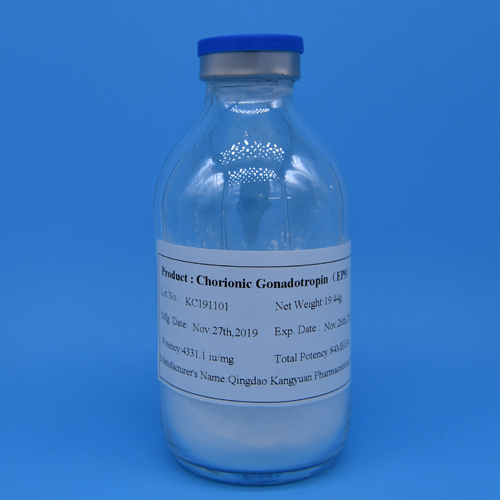Human Chorionic Gonadotropin (hCG) and Human Menopausal Gonadotropin (HMG)
are two important hormones with significant roles in reproductive health and
medicine. Despite having distinct origins and functions, both hormones play
crucial roles in fertility treatments and have revolutionized the field of
assisted reproductive technology. In this article, we will delve into the
functions, sources, and medical applications of hCG and HMG, highlighting their
contributions to reproductive medicine.

Human Chorionic Gonadotropin (hCG):
a. Function: hCG is a glycoprotein hormone primarily produced by the
placenta during pregnancy. Its primary function is to support early pregnancy by
stimulating the corpus luteum to produce progesterone. This helps maintain the
uterine lining and supports the growing embryo.
b. Source: During pregnancy, hCG is naturally produced by the developing
embryo and later by the placenta. Additionally, synthetic hCG can be produced
for medical use.
c. Medical Applications: The detection of hCG in urine and blood is widely
used as an early marker for pregnancy. Moreover, in fertility treatments like
in-vitro fertilization (IVF) and intrauterine insemination (IUI), hCG is
administered to trigger ovulation, increasing the chances of successful
fertilization.
Human Menopausal Gonadotropin (HMG):
a. Function: HMG is a mixture of follicle-stimulating hormone (FSH) and
luteinizing hormone (LH). FSH plays a crucial role in stimulating the growth and
maturation of ovarian follicles, while LH triggers ovulation.
b. Source: HMG is derived from the urine of postmenopausal women, where FSH
and LH levels are naturally elevated due to menopause.
c. Medical Applications: HMG is used in fertility treatments to stimulate
ovulation in women struggling to conceive. It can be used as a standalone
medication or in combination with other fertility drugs to induce ovulation and
increase the likelihood of pregnancy.
Comparing hCG and HMG:
a. Functions: While hCG is primarily associated with pregnancy support and
early pregnancy detection, HMG is specifically utilized to stimulate follicular
growth and ovulation in fertility treatments.
b. Sources: hCG is produced by the placenta during pregnancy, whereas HMG
is derived from postmenopausal women's urine.
c. Medical Applications: Both hormones are instrumental in fertility
treatments, but their applications differ. hCG is used to trigger ovulation,
while HMG is used to stimulate follicular growth and induce ovulation.
Human Chorionic Gonadotropin (hCG) and Human Menopausal Gonadotropin (HMG)
are essential hormones in reproductive health and medicine. While hCG supports
early pregnancy and serves as a pregnancy marker, HMG aids in stimulating
ovulation during fertility treatments. Both hormones have significantly
contributed to the advancement of assisted reproductive technology, providing
hope and opportunities for couples facing infertility. Understanding the
distinct roles and applications of hCG and HMG allows healthcare professionals
to tailor fertility treatments, fostering further advancements in reproductive
medicine.